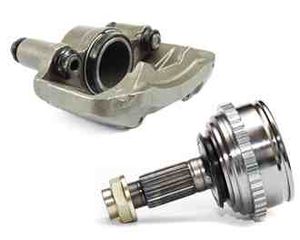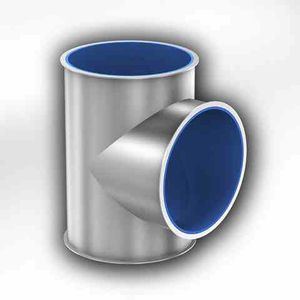Abrasion-resistant Coatings
Abrasion-resistant Coatings help to avoid the wearing away of parts and equipment due to mechanical or contact related forces. Abrasion, also known as grinding or wearing away due to friction, is a factor on any industrial part, no matter the hardness. Abrasion resistant coatings help to minimize the effect of friction on the outer surface of metal parts. These offer four different options for your abrasion restant coating solutions: With the help of abrasion resistant coatings, hardness is only the beginning. Each of its four options help components maintain more conformity with specified dimensional tolerances, while maintaining a profitable mix between bond strength, coverage reliability, dimensional stability and cost effectiveness.
Conventional abrasion-resistant coatings often feature metal oxide particles incorporated within the resin film to suppress marring, scratching or abrading of the coating. Alumina is the preferred oxide for this purpose due to its extreme hardness (9 on the Mohs scale), and relatively low cost. The drawback to such alumina-containing films is that, although the abrasion resistance is often improved, the transparency of the coating is compromised due to the light scattering of the micron-sized alumina particles used.
However, the use of nanometer-sized alumina in such coatings offers a solution to this problem since the particles are less than 100 nm in diameter, and thereby greatly reduces haze from light scattering. In addition, the alumina particles produced in the PVS process are spherical, which, combined with their small and uniform size, yields a more even film surface to further enhance the scratch resistance of the coating.
The abrasion resistance properties of nanocrystalline alumina were evaluated by incorporating the particles in a crosslinked melamine-formaldehyde resin. Because melamine-formaldehyde resins are transparent and very hard, they are often used as protective coatings on non-flexible surfaces such as furniture and flooring. The alumina was first dispersed in water to disrupt the loose powder agglomerates, and then surface treated to attach functional groups to the oxide surface. The surface functionalization process was designed to prevent particle agglomeration during the film curing process.
A TEM image of the coated alumina particles is shown in Figure 1. As the image shows, the spherical alumina particles are each coated with a thin uniform layer approximately 0.5-1 nm thick. The coated alumina particles were blended with the aqueous melamine-formaldehyde resin system at the desired concentration, from which films were drawn down on glass substrates at 1 mil thickness and cured by heating at 150oC for 15 minutes. The cured film thickness was 9.6 mm.
Video

